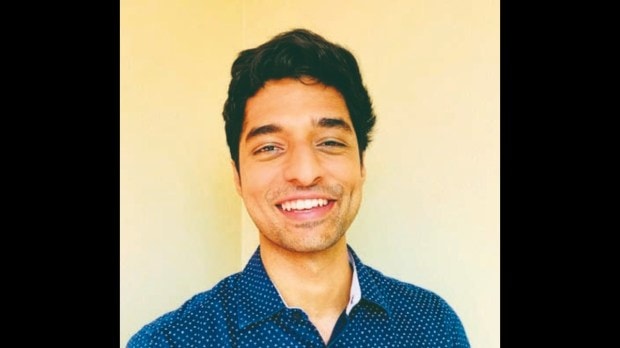For Sharan Hegde, creating content has been a rewarding journey. The popular ‘finfluencer’ and founder of financial edtech platform ‘The 1% Club’ even says it has changed his life.
“Content creation has put me 20 years ahead in my professional journey. People usually say they will start a company at the age of 40-45 and work for a few years but content creation has given me the opportunity to start a company within two years. This is a big transformation in my life,” he adds.

Having worked with leading fintech companies such as Cred, Wint Wealth, Groww and others, Hegde helps people make better decisions. “My content enables establishing trust with millions of people. Due to this, I am able to educate people on the things they should consider to increase their financial literacy and interest in financial education and consuming more content in the form of articles, books or long-form YouTube videos. I think there has been some real impact,” says Hegde, who has over 2 million followers on Instagram.
Content creators such as Hegde are capitalising on a new wave of commerce aided by the explosion of new forms of digital media. From making bite-sized reels, long-form vlogs or viral videos as a mere source of instant fame on social media, Indian content creators, much like others around the world, are now becoming dynamic drivers of the economy. As brands continue to place their trust in influencer marketing, as opposed to the traditional forms, content creators are also playing an increasingly important role in their marketing strategies.
The YouTube story
The rise of India’s creator economy is entwined with Alphabet’s YouTube, which has given impetus to the creative scene in the country. YouTube reported $7.95 billion in ad revenues in the third quarter this year. As of the end of last year, over 7,000 YouTube channels in India had more than 1 million subscribers (a 50% increase year-on-year) and over 450,000 channels had more than 10,000 subscribers, (a 45% increase year-on-year). This growth trajectory in the subscriber base is directly linked to increased incomes for Indian creators.
“Today, anyone with an idea, an insight or inspiration can come to YouTube to tell their stories, reaching a global audience of billions of viewers. The Indian creator economy has the potential to emerge as a soft power impacting economic growth, job creation and even cultural influence,” says Ishan John Chatterjee, director, India, YouTube.

— Ishan John Chatterjee, director, India, YouTube (FE)
According to Chatterjee, YouTube Shorts has given mobile-first creators a new way to engage with an enormous global community. “In India, Shorts has been lowering the barriers for under-represented voices that may otherwise have not had a platform. We are seeing creators across languages, socio-economic backgrounds and even India’s hinterlands turn to Shorts to share their passions, grow their channels and build successful careers,” he says.
It is estimated YouTube paid more than $50 billion to creators, artistes and media companies in the three years prior to June 2022. “We only succeed when our creators do—this revenue-sharing model is in our DNA and will remain core to our business. Since it was first launched in India in 2007, the YouTube Partner Programme has been helping creative entrepreneurs convert their passions into professions, earn a living and support the livelihoods of the people they in turn employ. We continue to see more creative thinkers and doers, from across all backgrounds and geographies, find their voice and build new ventures on YouTube,” Chatterjee says.
The societal impact of the creator economy cannot be denied as it is boosting job creation in India by giving a regular income to independent creators. In 2021, it was reported that YouTube’s creative ecosystem contributed nearly `10,000 crore to the country’s GDP. In 2022, $35 billion was contributed to the US’ GDP by the ecosystem. The huge difference can be attributed to creators who are able to bring more subscribers to their channels due to their popularity, content and its relevance. However, things have started looking up in India as well. Chatterjee credits “sophisticated” creation tools, which, he feels, are democratising creativity: “We are seeing the creator economy take new shape. The next-gen creators are coming from all corners of the country. Subcultures are becoming mainstream. And, the intersection of creativity and fan-fuelled discovery and commerce will drive the next wave of success.”
Global push
Facebook and Instagram are unarguably the world’s largest social media platforms by user base, which are owned by US-based social media giant Meta. In the past financial year, Meta, which recently launched a new platform like X (formerly Twitter) called Threads, clocked $116 billion in revenue through ads and content while helping creators expand their revenues. Facebook alone has close to 3 billion active users globally. YouTube is another platform where creators are making it big.
According to a YouTube study with Oxford Economics, “YouTube’s creative ecosystem contributed over $35 billion to the US economy in 2022 and supported more than 390,000 full-time equivalent jobs.” A 2021 study had put the figure as $25 billion in economic output with 425,000 full-time jobs.
YouTube Shorts, the company’s mobile-first short-form video product, attracts over 50 billion views every day.
Since the service began sharing advertising revenue with creators in January this year, creators such as Alan Chikin Chow, a 26-year-old US-based creator of comedy clips, has attracted over 32 million subscribers to his channel. “I started making videos as a way to connect with my family. When I went to college, my mom and dad moved to a little town in West Virginia where they had no friends or family. So, I started making videos as a way to make my mom laugh. It’s gone from my mom to over 40 million followers across platforms, a full company with employees,” says Chow, who has earned millions to become YouTube Shorts’ top creator.
Chow began his acting career in Hollywood and has so far worked in ABC’s Grey’s Anatomy, Hulu’s Into the Dark, Warner Bros’ The Emperor of Malibu and will be seen in Paramount’s upcoming feature adaptation of Mean Girls: The Musical. On his phenomenal success, the actor says, “I’m grateful that when I started focusing on a positive message, that’s when I started to see success. I’m happy to make the crossover back into Hollywood! My background is acting for film and television and I studied screenwriting at USC, so it’s a great fit,” he says.
As a digital creator, Chow’s first payment from the TikTok Creator Fund was only $2.50, but that was the spark he needed to make a career in the space. “I saw the future, the potential of being a creator. The major challenge initially was the trap of short-term thinking. There were many instances where I could have taken quick money but would have been detrimental to my brand. Sticking to the long-term mindset has paid off,” he adds.
Brand endorsement is one aspect of the creator economy without which no one can make it big. For Chow, a universal message is important when it comes to brand endorsements. “My message is ‘unity through story’, so I try to find brands who prioritise unity and love,” he says. Asked what is the strategy behind his growing subscriber base and the actor replies: “The best way is to make universal content. For the majority of my career, there was minimal talking in my videos, that way no matter what language my followers spoke, they could understand the message behind the media. Now with Alan’s Universe, we have subtitles for over 15 languages, so everyone can join in on the fun.”
Opportunities galore
A rise in several new platforms across the world in the pandemic years accelerated the growth of the creator economy. In India, while a lot of these startups had to shut shop in a year or two, those who were able to find a niche for themselves have managed to stay afloat. Platforms such as Medium, Wattpad, Blogger and the fairly new Substack have become a regular source of income for independent writers and journalists. But Substack in India, where the majority of readers prefer not to pay for news and consume content largely on freely available online sources, has not taken off. The surge of interest in the US and elsewhere is compelling even journalists from mainstream media houses like The New York Times to produce their own newsletters.
Netflix, the world’s largest streaming service provider, easily reached the figure of 238 million subscribers this year. Meta’s Threads, meanwhile, managed over 5 million users in a matter of just five days. Creators are making it big on audio-based platforms such as Spotify and Clubhouse. The revenue models for several such platforms rely on creators who get cuts from the money these companies make through subscriptions. Creators rely on various income streams such as digital tips, endorsements, direct funding from platforms and other forms of digital payments.
Twitter was rechristened as X this year after Elon Musk took over, and the platform underwent a lot of changes. It launched a revenue-sharing initiative for content creators from its advertisement revenues. At the time, when X began rolling out its first payouts, the new feeds were filled with posts from verified users, who posted screenshots of payment messages. India-based user Abhishek Asthana, who manages @GabbarSingh (1.5 million followers), was the first one to post about his earnings. “I started early, so that helped—it has been 13 years now. I do not adhere to any content strategy other than posting on a regular basis,” Asthana says.

— Abhishek Asthana (@GabbarSingh), X user. (FE)
According to X’s website, “To be considered eligible for creator ads revenue sharing you must be subscribed to X Premium or verified organisations, have at least 5 million organic impressions on your cumulative posts within the last 3 months and have at least 500 followers.” About his income on X, Asthana, who received Rs 2 lakh as his first payout, says, “On an average, payout is around Rs 40,000-Rs 50,000, and one can earn over a lakh rupees on a monthly basis.”
While the payouts may not be as lucrative as those of YouTube creators, they offer opportunities to a number of X users who previously relied on other platforms for revenue. “On X, it is difficult to survive independently if we can compare it with revenues on YouTube, where for a million post views on YouTube one can earn Rs 50,000. While for 1.5 million followers on X, you get the same amount,” Asthana says.
Musk’s stance on content moderation is negatively impacting X’s ad revenues—the platform’s monthly US ad revenues have dropped 55% year-on-year. About Musk’s decision to introduce curbing disinformation on the platform and his recent announcement that posts flagged by Community Notes as misleading will not be eligible for revenue share, Asthana says, “Right now, a lot of changes are being introduced. Things always have two sides to it —one man’s disinformation can easily be another man’s fact. So Community Notes is a welcome change. It is a very open and democratic feature. It will certainly give credibility to content on X.”
Asthana co-founded the pseudonym social network, Zorro, to give users freedom to express themselves. “Zorro was founded to give unfiltered space to people to share views. It is a platform where you can have pseudonymous handles and talk freely about the stuff you want. We have an anonymous CMS, where we put top industry leaders to whom you can ask questions anonymously,” he adds.








